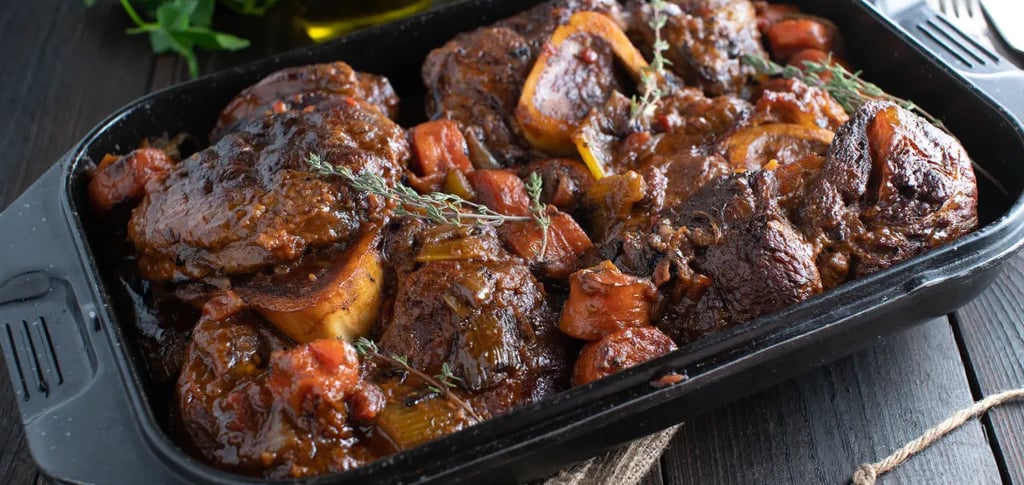Ossobuco: Milan’s Slow-Cooked Masterpiece with a Heart of Marrow
Descrizione del pTender veal shanks, rich sauce, and a bone full of silky marrow — Milan’s ossobuco is comfort and elegance slow-cooked into every bite.ost del blog.
LOMBARDIAFOOD


Golden meat, a silky sauce, and a secret at the center: the rich marrow that makes every bite unforgettable. Ossobuco, literally “bone with a hole,” is a dish that turns humble veal shanks into a comforting, elegant feast. Whether served with creamy risotto or crusty bread, it’s the kind of meal that invites you to slow down and savor.
History and Origins:
Ossobuco is a Milanese hallmark dating back to the 18th century. Derived from the Lombard practice of cooking the meat slowly in flavorful stock, it began life as a means of getting maximum value from economy cuts. It ended up as Sunday and special occasion food, and often came with Risotto alla Milanese. The name refers to the marrow-filled bone in the middle of the characteristic shank, the real prize of the dish.
Ingredients and Preparation:
Star of the dish is veal shank, cut into thick slices so the central bone and marrow are apparent. The meat is dredged in flour and browned, then lightly braised with onion, carrot, and celery, and white wine and stock. Tomatoes are occasionally used for added richness in the sauce. A Milanese classic is the gremolata—a light combination of parsley, garlic, and lemon zest—dotted on top when serving, cutting the richness and providing freshness. Long, slow cooking makes the meat so tender it practically falls from the bone.
Where to Try It:
In Milan, Trattoria Milanese has been serving traditional ossobuco with saffron risotto for decades. Ratanà offers a refined yet faithful version, perfect for those seeking a modern touch. Beyond Milan, you’ll find excellent ossobuco in Lombard countryside osterias, especially in winter when hearty dishes are most appreciated.
Conclusion:
From the first forkful of tender meat to the last scoop of silky marrow, ossobuco is a dish that speaks of patience, tradition, and the pleasure of sharing a meal worth lingering over.
